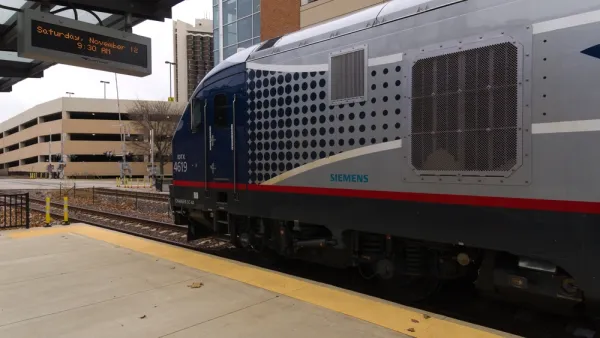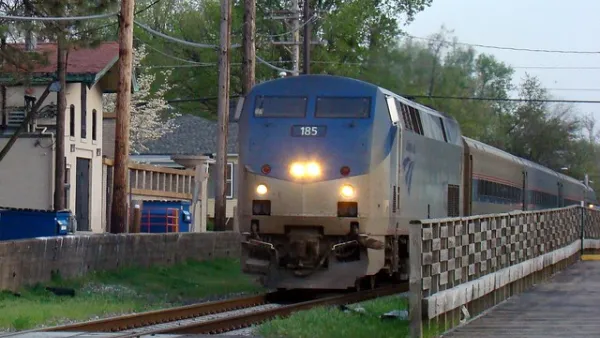House Republicans object to further funding of the High-Speed Intercity Passenger Rail program - largely due to California's expectation to receive $42 billion in federal funding - yet less ambitious projects have shown much promise.
The "High-Speed Intercity Passenger Rail (HSIPR) program hasn’t received funding since 2010", writes Ryan Holeywell, a result of "a budget deal struck with Republicans in April 2011." Ironically, a problem with restoring the funding lies with the one remaining true high speed rail project in the nation after Florida Gov. Rick Scott rejected $2.4 billiion of federal funding for the much more limited, and highly achievable, 84-mile Tampa to Orlando project in Feb., 2011.
HSR opponents have fixated on the $42 billion that the California High Speed Rail Authority expects to receive from the federal government for its $68.5 billion, 800-mile project linking northern and southern California with 220-MPH trains. Holeywell captured this "tense exchange" between Transportation Secretary Ray LaHood and Rep. Jeff Denham, a Republican representing California’s Central Valley who "chairs the House subcommittee overseeing rail" who asked where the federal funds would come from.
“We’re not going to get one dollar as long as there’s language in appropriation bills that says no federal money can be spent on California high-speed rail,” replied an agitated LaHood, referring to an amendment Denham had championed last year. “That doesn’t help us.”
Other, less ambitious, less costly projects that have received HSIPR funding have gone forward that upgrade existing lines, such as trains reaching 110 MPH linking Chicago and St. Louis (reported here last year),
And in the Seattle-Portland corridor, there will soon be six round-trip trains per day, up from four; officials there say the uncertain future of federal funding won’t undo that work.
Referring to the California project and Amtrak's $151 billion plan for Northeast Corridor, "Emil Frankel, a visiting scholar at the Bipartisan Policy Center who served as assistant secretary for transportation policy under George W. Bush asked, “Where’s the money going to come from? In balancing the demands of the federal budget -- let alone state budgets -- it’s just impossible to imagine.”
As for the $40 billion in rail investment in President Obama's budget, Holeywell writes, "It’s become a routine occurrence, but such grand proposals for rail expenditures have increasingly rung hollow."
FULL STORY: Has High-Speed Rail Been Derailed?

National Parks Layoffs Will Cause Communities to Lose Billions
Thousands of essential park workers were laid off this week, just before the busy spring break season.

Retro-silient?: America’s First “Eco-burb,” The Woodlands Turns 50
A master-planned community north of Houston offers lessons on green infrastructure and resilient design, but falls short of its founder’s lofty affordability and walkability goals.

Delivering for America Plan Will Downgrade Mail Service in at Least 49.5 Percent of Zip Codes
Republican and Democrat lawmakers criticize the plan for its disproportionate negative impact on rural communities.

Test News Post 1
This is a summary

Test News Headline 46
Test for the image on the front page.

Balancing Bombs and Butterflies: How the National Guard Protects a Rare Species
The National Guard at Fort Indiantown Gap uses GIS technology and land management strategies to balance military training with conservation efforts, ensuring the survival of the rare eastern regal fritillary butterfly.
Urban Design for Planners 1: Software Tools
This six-course series explores essential urban design concepts using open source software and equips planners with the tools they need to participate fully in the urban design process.
Planning for Universal Design
Learn the tools for implementing Universal Design in planning regulations.
EMC Planning Group, Inc.
Planetizen
Planetizen
Mpact (formerly Rail~Volution)
Great Falls Development Authority, Inc.
HUDs Office of Policy Development and Research
NYU Wagner Graduate School of Public Service





























